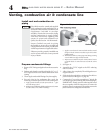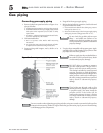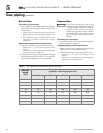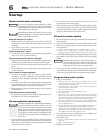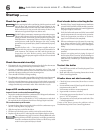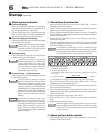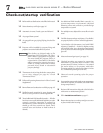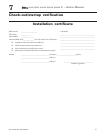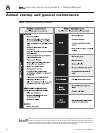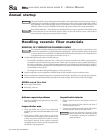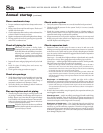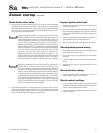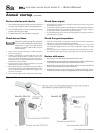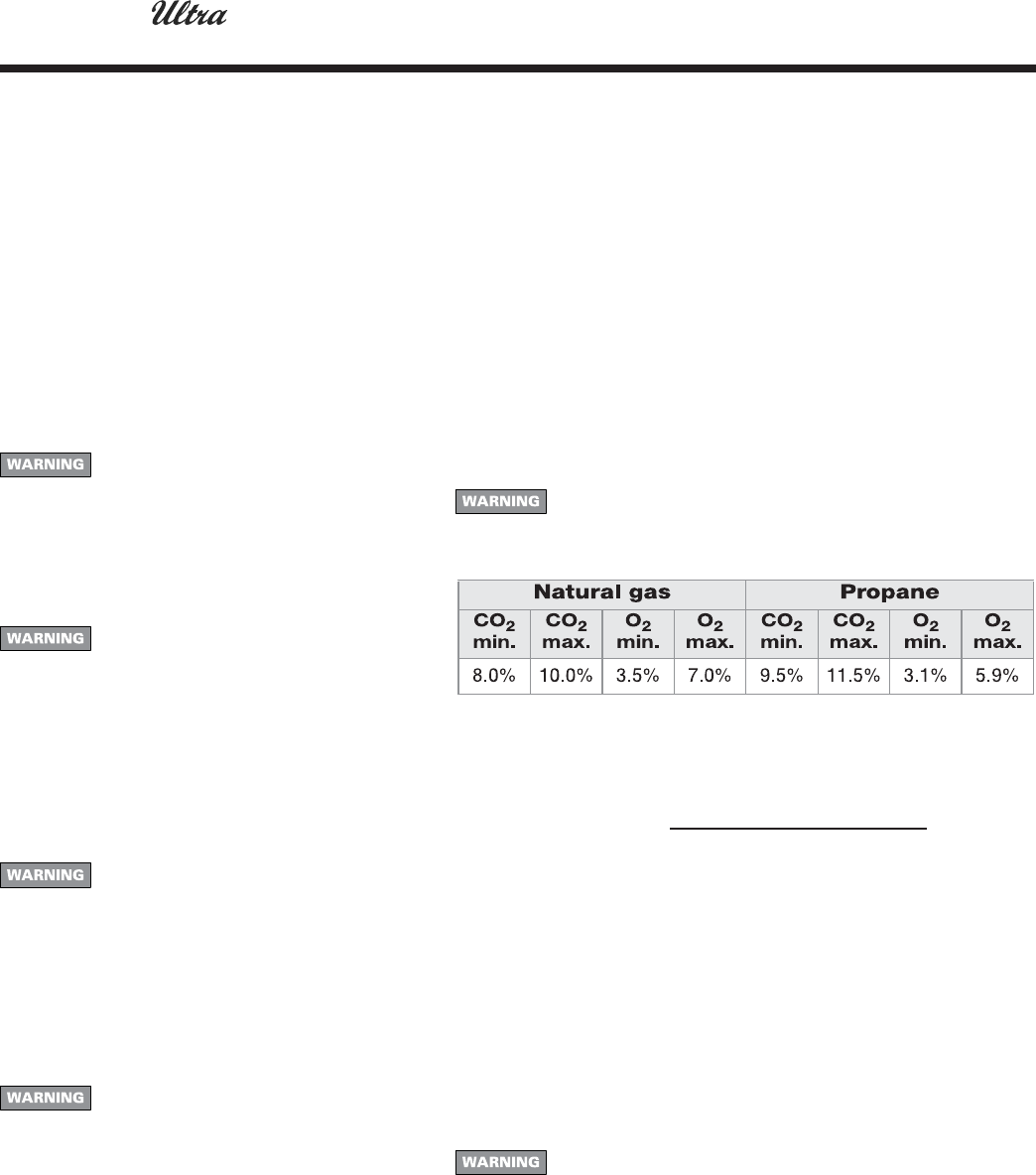
GAS-FIRED WATER BOILER SERIES 2 — Boiler Manual
Part number 550-100-026/0404
25
Startup
(continued)
6
❏ Check flame & combustion
1. Press and hold both the Ultra control panel “Mode” and “+” buttons
simultaneously until “H” appears.
2. The “H” in the first digit of the display means the boiler will operate at
high fire when the blower speed reaches maximum.
3. Look at the flame through the flame inspection window. The high fire
flame should be blue and should be stable. The burner surface should be
covered with orange dots.
4. Remove the flue temperature sensor from the flue pipe and insert a
combustion test probe.
5. Testing is suggested for either CO
2
or O
2
and for CO. The values should
be in the range listed in the table below. The CO should not exceed 100
ppm when combustion is correct.
If combustion at either high or low fire is outside the range
given below, shut down the boiler and contact your local Weil-
McLain representative. Failure to comply could result in severe
personal injury, death or substantial property damage.
6. Measure natural gas input:
a. Operate boiler 10 minutes.
b. Turn off other appliances.
c. At natural gas meter, measure time (in seconds) required to use one cubic
foot of gas.
d. Calculate gas input:
3600 x 1000
number of seconds from step c
= Btuh
e. Btuh calculated should approximate input rating on boiler rating label.
7. Press and hold the Ultra control panel “Mode” and “-” buttons
simultaneously until the display shows “L”.
8. The “L” in the first digit means the boiler will operate at low fire when the
blower speed reaches minimum.
9. Look at the flame through the flame inspection window. The low fire
flame should be stable and evenly distributed over burner surface with a
uniform orange color.
10. Repeat the combustion test of steps 4 and 5 above.
11. Press and hold the “+” and “-” buttons to return boiler to automatic
firing.
12. Replace flue gas temperature sensor.
You must replace the flue gas temperature sensor to prevent
flue gas spillage into the boiler enclosure. Failure to comply
could result in severe personal injury, death or substantial
property damage.
❏ Adjust and test boiler controls
1. Follow instructions in the Ultra Control Supplement to set and verify
operation of the boiler controls.
❏ Check system and boiler
❏❏
❏❏
❏ Check water piping
1. Check system piping for leaks. If found, shut down
boiler and repair immediately. (See WARNINGS on
page 23 regarding failure to repair leaks.)
2. Vent any remaining air from system using manual
vents. Air in the system will interfere with circulation
and cause heat distribution problems and noise.
❏❏
❏❏
❏ Check vent piping and air piping
1. Check for gas-tight seal at every connection and seam
of air piping and vent piping.
Venting system must be sealed gas-tight to
prevent flue gas spillage and carbon
monoxide emissions which will result in
severe personal injury or death.
❏❏
❏❏
❏ Check gas piping
1. Check around the boiler for gas odor following the
procedure of page 21 of this manual.
If you discover evidence of any gas leak,
shut down the boiler at once. Find the leak
source with bubble test and repair
immediately. Do not start boiler again until
corrected. Failure to comply could result
in severe personal injury, death or
substantial property damage.
❏❏
❏❏
❏ Propane boilers — verify conversion
1. Verify propane orifice has been installed per Propane
Conversion instructions.
DO NOT adjust or attempt to measure
gas valve outlet pressure. The gas valve is
factory-set for the correct outlet pressure.
This setting is suitable for natural gas and
propane, requiring no field adjustment.
Attempting to alter or measure the gas valve
outlet pressure could result in damage to
the valve, causing potential severe personal
injury, death or substantial property
damage.
Ultra boilers are shipped ready to fire
natural gas ONLY. Exception: The Ultra-
80LP is factory-equipped to fire propane.
You must install the propane orifice if the
boiler will be connected to propane. See
page 9. Failure to comply could result in
severe personal injury, death or substantial
property damage.





